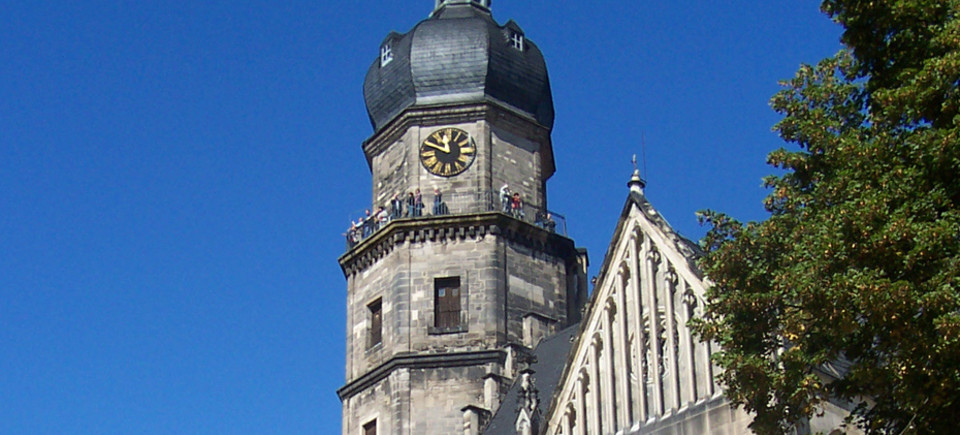The Castle
The former residence of the electors from the House of Wettin is perched on a porphyry cliff. The Hohenstaufen emperors, House of Wettin electors, and dukes from Gotha and Altenburg all added to the impressive, 1000-year-old castle. The castle’s museum contains examples of ducal life and diverse collections of, among other things, valuable porcelain, a baroque cabinet full of valuable items, and of course playing cards from five centuries and five different continents. Guided tours of the ballrooms are made hourly. The step-free Hausmann’s Tower built during the Hohenstaufen era can be easily climbed.
St. Nikolai Church and the Nikolai Quarter
What is now a scenic quarter around the St. Nikolai Church and watchtower was once a poor neighbourhood and site of constant upheaval during the time of the Reformation, where violence was not uncommon. From the tower visitors have a wonderful view across the roofs of the historic old city, and Leipzig is almost visible in the distance.
The Renaissance City Hall
Saxon architect Nikolaus Grohmann’s castle chapel in Torgau was the first protestant church and with his various other buildings he introduced the renaissance in central Germany. For reformed Altenburg and its confident city fathers he built a representative new city hall, which with its carved heads, moon clock, and beautiful portal continues to dominate the city’s extensive marketplace. The well-preserved council chambers can also be viewed from Monday to Friday.
The Luther Path
The Via Imperii, the imperial road running from Leipzig to Nürnberg, and the Peter and Paul Road, a trade route running from Naumburg through the Ore Mountains (Erzgebirge) to Bohemia. Altenburg was thus a hub along the Luther Path between Thuringia, Saxony, and Saxony-Anhalt. Pilgrims set out to the north to Borna and Leipzig along the Via Imperii, which is also part of the St. James Way, or to the south to Zwickau. To the west the path passes through Gera to the Vogtland, or through the former diocesan city Zeitz to Naumburg. To the east a path past Gnandstein Castle connects to the Via Porphyria.
The Luther-Spalatin Path
The Reformation greatly changed the city. Making this tangible is one of the goals of the Luther-Spalatin Path. It is quite easy to imagine George Spalatin making his rounds between the city’s monasteries, city hall, and its churches, as these structural witnesses of his world are still present and offer valuable insights regarding the impact the reformation had on both the people of the past and present.






